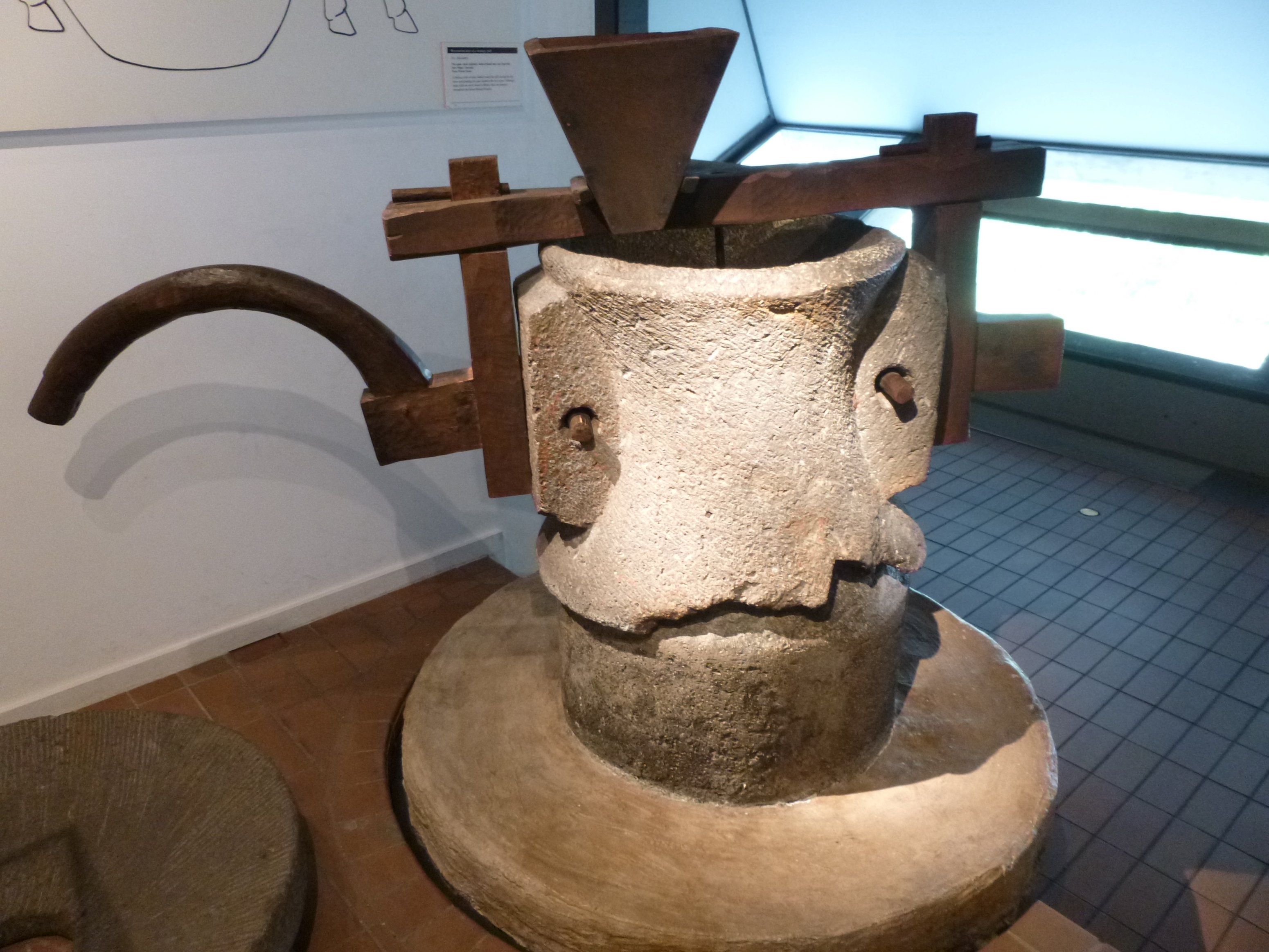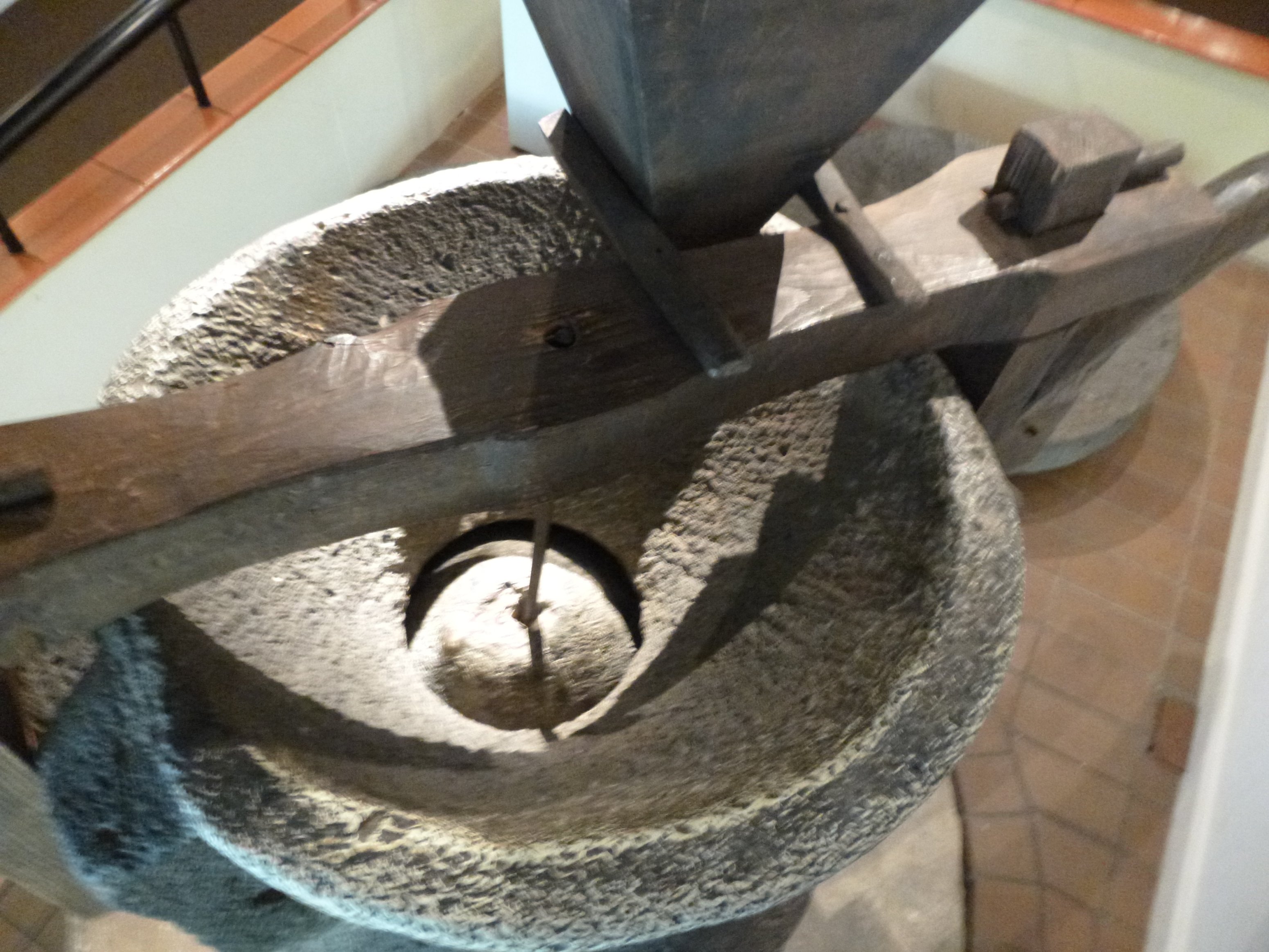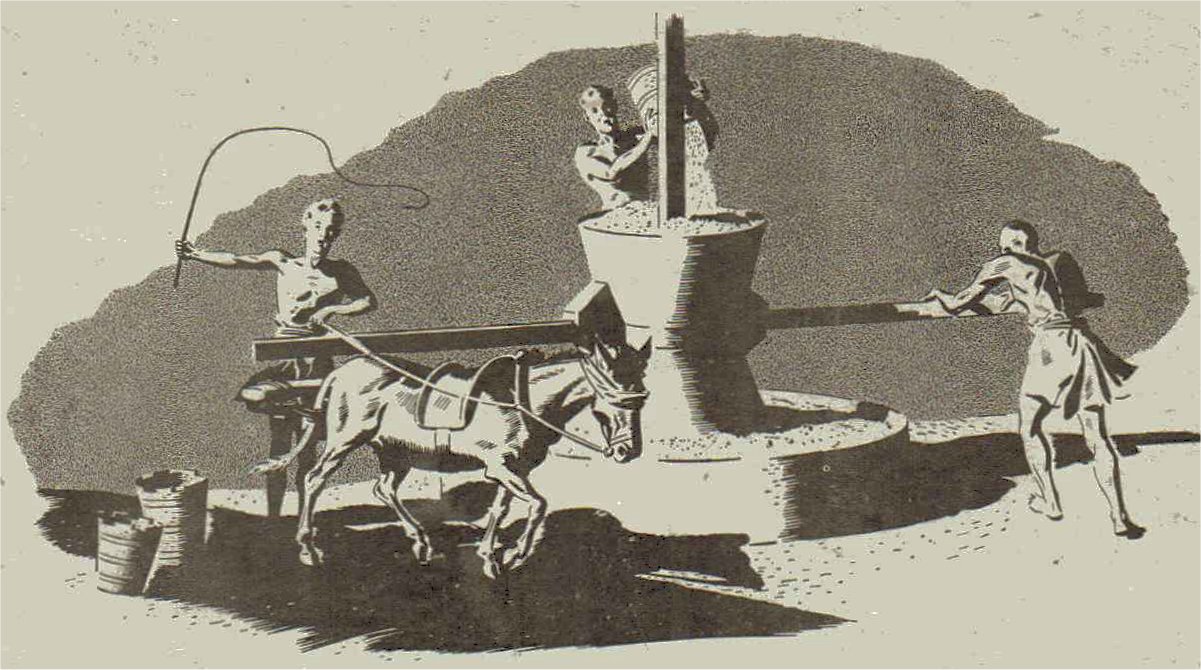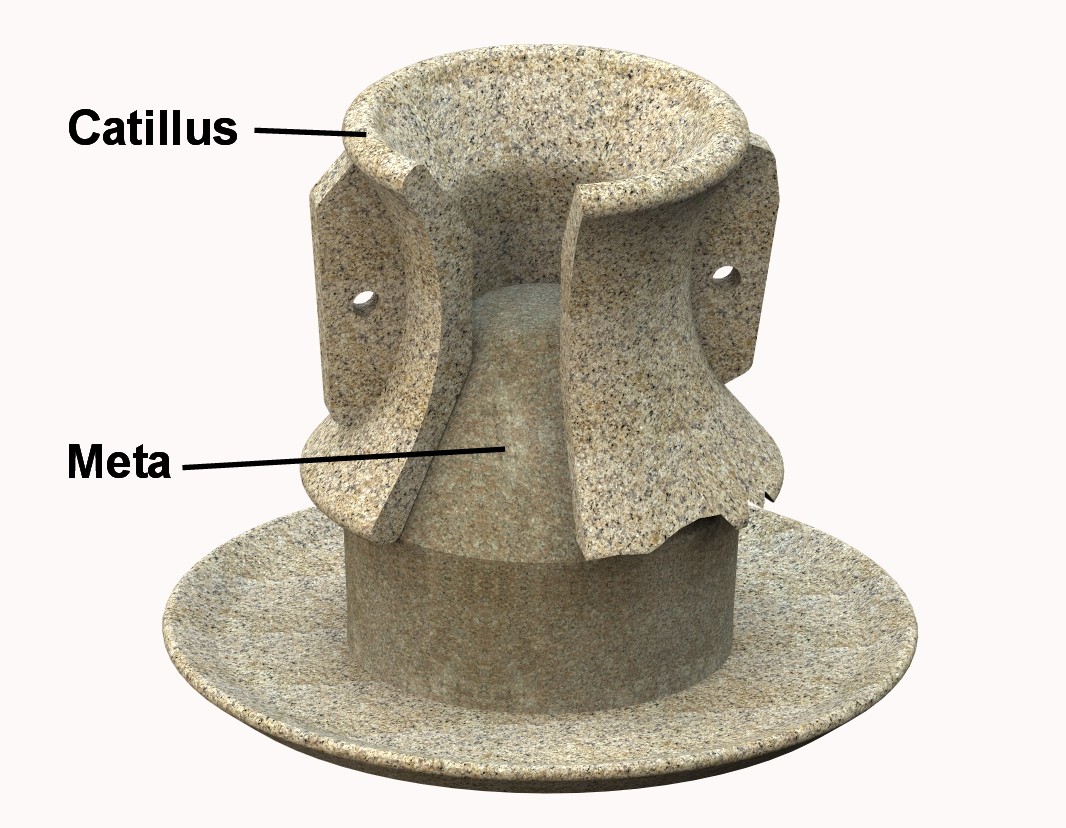Reconstruction of a Pompeian-style Mill
Nigel Harris
|
|
Some time ago whilst browsing through
a copy of the 1982 Transactions of the 5th
Symposium of The International Molinological Society
I came across a comment by Kenneth Major in which he
mentioned (page 355) that the Museum of London had
an hourglass-shaped Roman mill, which was found in
London, and was similar to those of Pompeii. He
went on to say that there was no doubt that it was
made of stone mined at Mayen, Germany. I made a
mental note to visit the museum the next time I had
the opportunity, to see if I could locate this mill.
|
|
 |
The reconstructed exhibit of the
Pompeian-style mill at the museum is shown in the
pictures I took recently (left and below).
The upper stone (catillus) is
the more or less complete original lava millstone
which was found in Princes Street, London in 1929. |
|
 |
It was made from a single piece of
rock in the form of two hollow cones, the upper
inverted cone forming a grain hopper. The museum
states that the catillus dates to the 1st to 2nd
century and was imported from Mayen.
However, I noted that Martin Watts in
his book The Archaeology of Mills & Milling
(page 46) states that this catillus is from
lava from the Volvic region of central France.
|

A Pompeian-style
mill. From an advert in The Miller magazine
dated May 1940. |
In operation a donkey, mule, or horse
(and sometimes slaves) walked around the mill
turning the upper stone and ground the grain between
it and the conical lower stone (meta).
|
|
These mills are rarely found in
Britain but they are said to be common throughout
the former Roman Empire. Although most of Roman
London’s food was produced locally, much of its
grain was probably brought in from East Anglia and
Kent, and some may have been imported from the
continent.
|

Pompeian-style mill
With thanks to John
Brandrick |
|
Further
reading:
Peacock D. (2013), The Stone of
Life – Querns, Mills, and Flour Production in Europe
up to cAD500, The Highfield Press, Southampton.
Chapter 5: Of men and beasts – the
Pompeian-style mill, page 77-97.
Acknowledgements:
Sarah Williams, picture researcher at
the Museum of London for permission to use my own
images.
This article appeared in April “Mill
News" this year. |
